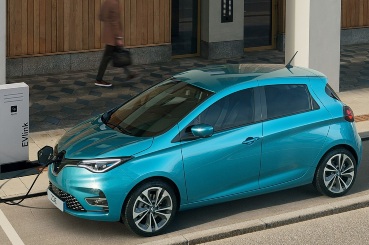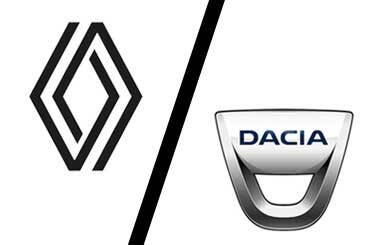Coolant Warning Light (What You Should Do)
If the coolant warning light becomes illuminated on your dashboard as you’re driving along, it’s a certain sign that your engine is overheating.
In order for your car to work, a series of explosions are created in the combustion chamber. These explosions move the pistons up and down which, in very simple terms, starts to power your engine. The side effect of all these explosions is a huge amount of heat.
In order to keep your engine from welding itself together, coolant is pumped around the engine. When this process fails, the engine temperature increases and triggers the coolant warning light.
What Is Engine Coolant?
Engine coolant, also known as antifreeze, is a vital fluid in your car that plays a key role in keeping the engine running smoothly. It’s a mixture of water and antifreeze concentrate, typically made with ethylene glycol.
The main purpose of engine coolant is to regulate the engine’s temperature. As the engine burns fuel, it generates heat, and coolant absorbs this heat to prevent the engine from overheating. Additionally, the antifreeze component protects the engine from freezing temperatures.
By lowering the freezing point and raising the boiling point of the coolant mixture, it stops the liquid from solidifying and cracking engine parts in cold weather, and from boiling over in hot weather.
Is Coolant the Same As Antifreeze?
Antifreeze and coolant are often used interchangeably, but there’s a slight difference.
Antifreeze is a concentrated liquid, typically containing glycol for frost protection. It needs to be diluted with water at the right ratio before being used in your car’s cooling system. This diluted mixture is what we call coolant.
You can also buy pre-mixed coolant, which is a ready-to-use solution containing the correct balance of antifreeze and water. So, antifreeze is an ingredient in coolant, but not the whole thing.
What Causes The Coolant Warning Light to Come On?
The most common reason for the coolant light to become illuminated is simply that the coolant level is too low. There may be a floating sensor in your coolant tank that triggers the warning light when the level drops. You may need to book a coolant change.
Low coolant levels are usually caused by leaks, either in the reservoir or somewhere in the lines. These leaks can be a serious problem, as they’re not easily diagnosed and easily fixed. As coolant travels around your engine, there are various places where it can leak from, such as hoses, the water pump or the radiator.

If you suspect a leak, you should call your local garage or breakdown service for recovery of your vehicle as soon as possible.
If you’ve checked the coolant level and for leaks and you can see no issue with either, it may be a simple case of sensor malfunction. The sensor may be sending incorrect information to the engine’s computer, which in turn is triggering the coolant warning light.
Again, this isn’t something you can fix yourself. Your local garage can perform a diagnostic check of your car’s computer which should highlight the problem being a faulty sensor. You can then have the sensor replaced, which should solve the problem.
Is It Bad If My Engine Overheats?
Yes, an overheating engine is absolutely bad for your car. It’s a warning sign that something’s wrong with the cooling system, which is vital for regulating engine temperature.
If left unchecked, overheating can cause serious damage to your engine parts, potentially leading to a hefty repair bill or even a complete breakdown. So, if you notice your temperature gauge creeping up, it’s best to pull over safely and turn off the engine to avoid further problems.
What Should You Do If The Coolant Warning Light Comes On?

First and foremost, you should stop your car as soon as it’s safe to do so. As we’ve said, the coolant light is telling you that your engine’s temperature is getting too high and this requires your immediate attention.
If you continue to drive, ignoring the warning light, you are submitting your engine to temperatures that could cause permanent damage, resulting in expensive repairs. It is far more sensible to stop your car and let the engine cool down.
Before you check anything, it’s vitally important that you let the engine cool down for at least thirty minutes first. If you try and open the coolant reservoir or the radiator cap whilst the engine is still hot, you run the risk of allowing hot, pressurised steam to blow out and burn you.
Once the engine has cooled down, slowly open the coolant reservoir cap, allowing any remaining pressure to be released. Once the pressure has subsided, you can remove the cap fully, check the level of the coolant and top up as required.
You can then have a look for any obvious leaks in the coolant reservoir or hoses, although these may be extremely hard to see. If you notice any leaks, do not continue your journey. Call your local garage or breakdown service for recovery.
If you don’t notice any leaks and the coolant warning light goes out once you’ve topped up the reservoir, you are alright to continue your journey, although you should keep an eye for the light coming back on again as it may be symptomatic of a problem that may return.
It may be a good idea to have your coolant system checked at your local garage at your earliest opportunity just to make sure there isn’t an underlying problem.
Remember, don’t ignore the coolant warning light. It’s a sign that your engine is overheating and ignoring it could cause significant damage to your engine.
How to Fix a Blue Coolant Light:
A blue coolant light typically means your engine coolant is running cold, but it’s best not to attempt a fix yourself. Pull over safely and turn off the engine.
Coolant is vital to prevent overheating, so driving with a warning light is risky. Consult your car manual to see if there’s any basic troubleshooting you can try, but generally, it’s recommended to call a roadside assistance service or get the car towed to a qualified mechanic for proper diagnosis and repair.
How to Fix a Red Coolant Light:
A red coolant light on your dashboard signifies a potential issue with your engine’s cooling system. The most common culprit is a low coolant level.
Pull over safely and turn off the engine when possible. Once it’s cooled down a bit, check your coolant reservoir, which is usually a translucent plastic tank under the bonnet.
If the coolant level is low, consult your car manual for the recommended coolant type and top it up with a 50/50 mix of coolant and water. However, a low coolant level can indicate a leak.
If you suspect a leak or the light remains on after refilling, don’t attempt further repairs yourself. It’s best to take your car to a garage to diagnose the problem and prevent potential engine damage.
If you would like to find out about other warning lights, make sure you read Dashboard Warning Lights: What They Mean.
Blog Comments
To view, comment or reply to comments you must be logged into facebook



